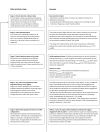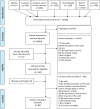Understanding how and why audits work in improving the quality of hospital care: A systematic realist review
- PMID: 33788894
- PMCID: PMC8011742
- DOI: 10.1371/journal.pone.0248677
Understanding how and why audits work in improving the quality of hospital care: A systematic realist review
Abstract
Background: Several types of audits have been used to promote quality improvement (QI) in hospital care. However, in-depth studies into the mechanisms responsible for the effectiveness of audits in a given context is scarce. We sought to understand the mechanisms and contextual factors that determine why audits might, or might not, lead to improved quality of hospital care.
Methods: A realist review was conducted to systematically search and synthesise the literature on audits. Data from individual papers were synthesised by coding, iteratively testing and supplementing initial programme theories, and refining these theories into a set of context-mechanism-outcome configurations (CMOcs).
Results: From our synthesis of 85 papers, seven CMOcs were identified that explain how audits work: (1) externally initiated audits create QI awareness although their impact on improvement diminishes over time; (2) a sense of urgency felt by healthcare professionals triggers engagement with an audit; (3) champions are vital for an audit to be perceived by healthcare professionals as worth the effort; (4) bottom-up initiated audits are more likely to bring about sustained change; (5) knowledge-sharing within externally mandated audits triggers participation by healthcare professionals; (6) audit data support healthcare professionals in raising issues in their dialogues with those in leadership positions; and (7) audits legitimise the provision of feedback to colleagues, which flattens the perceived hierarchy and encourages constructive collaboration.
Conclusions: This realist review has identified seven CMOcs that should be taken into account when seeking to optimise the design and usage of audits. These CMOcs can provide policy makers and practice leaders with an adequate conceptual grounding to design contextually sensitive audits in diverse settings and advance the audit research agenda for various contexts.
Prospero registration: CRD42016039882.
Conflict of interest statement
The authors have declared that no competing interests exist.
Figures
Similar articles
-
Understanding how and why audits work: protocol for a realist review of audit programmes to improve hospital care.BMJ Open. 2017 Jun 14;7(6):e015121. doi: 10.1136/bmjopen-2016-015121. BMJ Open. 2017. PMID: 28615270 Free PMC article. Review.
-
A realist synthesis of multicentre comparative audit implementation: exploring what works and in which healthcare contexts.BMJ Open Qual. 2024 Mar 5;13(1):e002629. doi: 10.1136/bmjoq-2023-002629. BMJ Open Qual. 2024. PMID: 38448042 Free PMC article. Review.
-
The influence of contextual factors on healthcare quality improvement initiatives: what works, for whom and in what setting? Protocol for a realist review.Syst Rev. 2017 Aug 23;6(1):168. doi: 10.1186/s13643-017-0566-8. Syst Rev. 2017. PMID: 28830572 Free PMC article.
-
Why do some inter-organisational collaborations in healthcare work when others do not? A realist review.Syst Rev. 2021 Mar 22;10(1):82. doi: 10.1186/s13643-021-01630-8. Syst Rev. 2021. PMID: 33752755 Free PMC article. Review.
-
The future of Cochrane Neonatal.Early Hum Dev. 2020 Nov;150:105191. doi: 10.1016/j.earlhumdev.2020.105191. Epub 2020 Sep 12. Early Hum Dev. 2020. PMID: 33036834
Cited by
-
'The way that we are collecting and using data has evolved' evaluating the Australian National Stroke Audit programme to inform strategic direction.BMJ Open Qual. 2023 Jan;12(1):e002136. doi: 10.1136/bmjoq-2022-002136. BMJ Open Qual. 2023. PMID: 36693674 Free PMC article.
-
Advisory groups in realist reviews: Systematically mapping current research and recommendations for practice.Cochrane Evid Synth Methods. 2024 Jun 11;2(6):e12073. doi: 10.1002/cesm.12073. eCollection 2024 Jun. Cochrane Evid Synth Methods. 2024. PMID: 40475884 Free PMC article. Review.
-
Pre-treatment assessment of chemotherapy for cancer patients: a multi-site evidence implementation project of 74 hospitals in China.BMC Nurs. 2024 May 11;23(1):320. doi: 10.1186/s12912-024-01997-8. BMC Nurs. 2024. PMID: 38734605 Free PMC article.
-
Implementation strategies of a national standard for comprehensive care in acute care hospitals: An interview study.Int J Nurs Sci. 2025 Jun 11;12(4):369-378. doi: 10.1016/j.ijnss.2025.06.002. eCollection 2025 Jul. Int J Nurs Sci. 2025. PMID: 40786853 Free PMC article.
-
Designing an optimal infection prevention service: Part 1.J Infect Prev. 2023 Jan;24(1):3-10. doi: 10.1177/17571774221127695. Epub 2022 Sep 21. J Infect Prev. 2023. PMID: 36644524 Free PMC article.
References
-
- McDonald KM, Chang C, Schultz E. Closing the quality gap: revisiting the state of the science. Rockville (MD); 2013. - PubMed
Publication types
MeSH terms
LinkOut - more resources
Full Text Sources
Other Literature Sources
Medical



